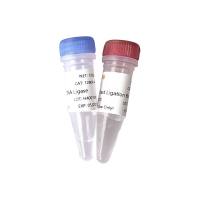Expressed Protein Ligation for Protein Semisynthesis and Engineering
Over the past decade, a significant methodological development in peptide ligation strategies has been elaborated that now permits the assembly of peptides and proteins. Native chemical ligation (NCL) has been introduced to join synthetic unprotected peptides by using the chemoselective reaction between a C-terminal thioester and an N-terminal cysteine residue to result in a native peptide bond. Although this method has been applied to obtain peptides, small proteins, or protein domains (up to approx 150 residues), larger proteins could not been easily received because of the limited size of the ligated fragments. Intein technologies benefit from the opportunity to participate in the production of polypeptides with the reactive groups necessary for NCL aside from the rapid isolation of highly pure recombinant proteins. Expressed protein ligation extends the scope of NCL by overcoming the size limitation of target proteins accessible to synthesis. The intein splicing and EPL have been already proven to be useful for protein semisynthesis and for various investigations, including the studies of protein-protein interactions, segmental isotopic labeling for protein structure determination, synthesis of cytotoxic proteins, protein cyclization, and site-specific incorporation of noncanonical amino acids and biophysical probes into a protein sequence. Key Words : Expressed protein ligation (EPL); intein; protein engineering; protein splicing; purification tag.
![预览]()






